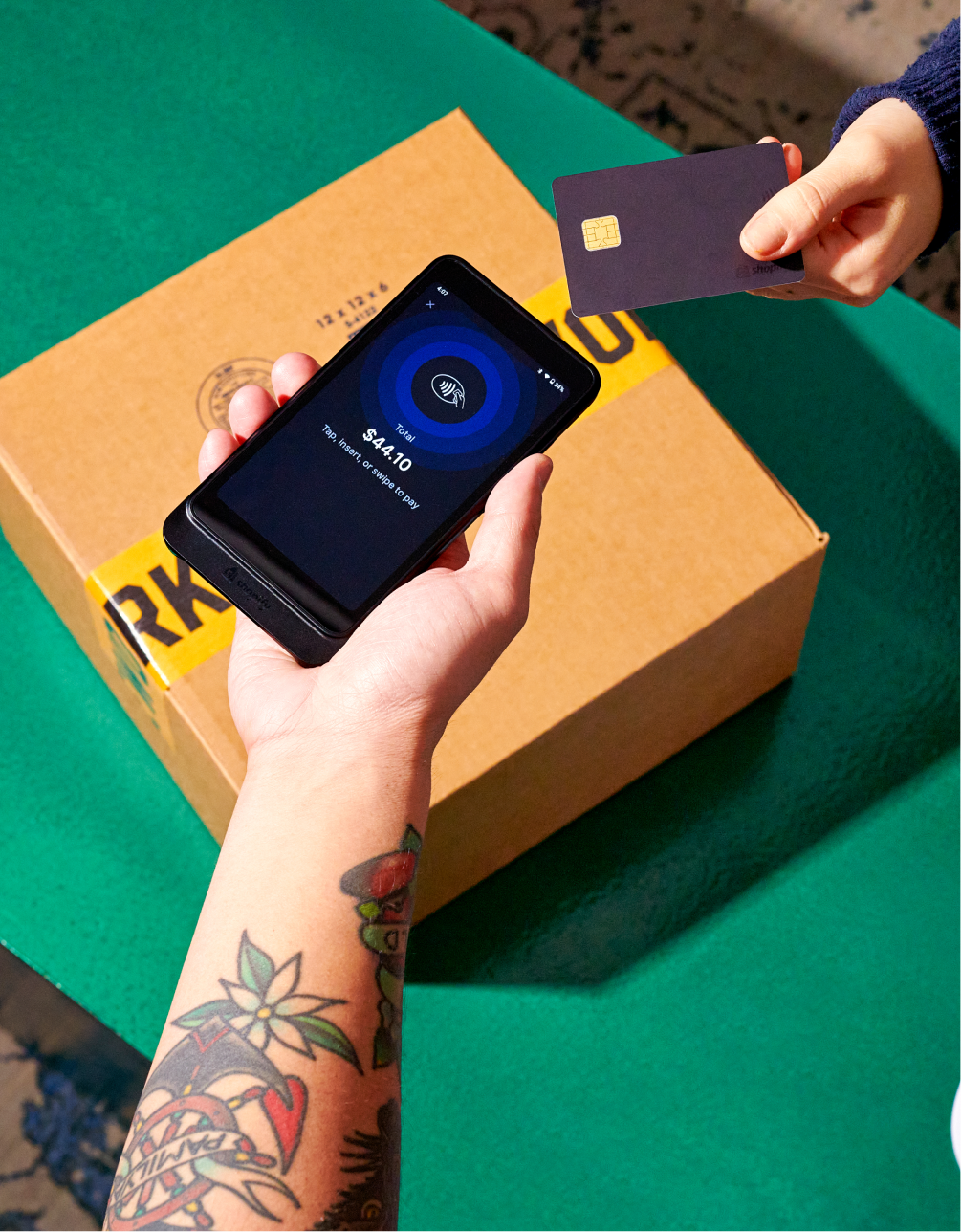The ecommerce industry has seen massive growth in the last few years, with no signs of slowing down. The covid-19 pandemic has further accelerated its growth in India; statistics suggest that the industry is all set to grow by 84% in 4 years, reaching $111 billion by 2024.
All this buzz around ecommerce has encouraged both offline and online retailers to step up their online game to provide customers with better shopping experiences and meet their changing expectations. From what used to be about setting up an online store with basic functionalities, ecommerce is now a lot focused on the shopping experience you offer in the store.
In this ever-changing ecommerce environment, retailers need to adapt to and integrate the latest ecommerce trends. Let’s take a look at the top trends shaping the ecommerce industry in 2022.
- Branding is important
- Focusing on mobile commerce
- Social commerce
- Augmented reality commerce
- Livestream shopping
- Conversational commerce
- Sustainability
- Buy now, pay later (BNPL)
- Use of crypto
- Video marketing
- Loyalty programs
- Diversified advertising and sales channels
- Need for personalization with the death of third-party cookies
- Community building
Ecommerce trends for 2022
The future of ecommerce is exciting. So we did a deep dive on technologies and trends that will be changing this sector forever, and also looked into Gartner’s Digital Commerce insights to bring you the following takeaways.
1. Branding is important
During our surveys for the Future of Commerce report, most marketers undervalue the importance of branding. About 70% of marketers were found cutting their budgets, sacrificing on branding building, to increase resources for performance-based advertising.
While conversion rates are important, it’s also crucial to note that most consumers have a brand in mind by the time they’re ready to make a purchase. In fact about 80% of consumers conduct thorough online research before making a purchase decision - and the only thing that stands out is a strong brand.
A study by Investopedia states that strong brands draw more organic acquisition, retain more customers, and can raise prices - the most powerful lever you can pull to increase profits in times when the competition is increasing by the day. As McKinsey puts it, performance branding is a thing and it only improves your marketing ROI.
Don’t have a brand in place? Here are some resources to help you get started:
- Find your name: 10 business name generators to help you create your brand
- How to design your online store logo to nail your branding
- How to create minimum viable brand guidelines
- Value propositions: What they are and how to create them
- How to protect your brand from identity theft online
2. Focusing on mobile commerce
Mobile commerce (also called mCommerce) is a process that enables customers to buy and sell products or services from almost anywhere, using a mobile device or tablet. Of all the ecommerce trends mentioned in this list, mobile commerce is taking the lead.
Indian retail customers are taking strongly to mobile commerce. Studies suggest that nearly 83% of people owning a smartphone shop using their mobile devices.
Various ecommerce businesses are shifting towards mobile-first strategies due to the release of new phone technologies, such as 5G. Plus, the fact that people are obsessed with their phones more than ever — with an average person using their mobile once every 10 minutes daily — makes this trend a must-follow.
From reaching and attracting more customers to encouraging repeat business with push notifications and SMS marketing — mobile commerce provides tons of opportunities to scale your business.
In short, mobile commerce is all about reaching your audience where they are and providing them with a personalized yet unforgettable experience.
To get started with mobile commerce, here are some handy resources:
- Mobile commerce solutions by Shopify
- The rise of mCommerce in India and leading brands leveraging it
- Mobile app builders for Shopify stores
3. Social commerce
Considering 91% of social media users access social channels through their mobile phones — it’s no surprise that social commerce is rising.
Social commerce is buying and selling products or services directly on social media. In other words, the entire shopping journey — from product discovery and purchase process — happens on a social media platform. Not only it allows customers to interact with brands, but it also creates a more frictionless journey for them and more sales for the ecommerce business.
Research shows that 73% of businesses have already hopped on this trend, while 79% are expected to do the same in the next three years. So, if you’re not selling products on social media, NOW is the right time to do so.
Social commerce platforms such as Instagram Shopping, Facebook Shop, and Pinterest Business are allowing users to explore new products and complete the checkout process without ever leaving the app.
Check out how The Wishing Chair leverages Instagram Shop to allow its customers to browse new products and communicate directly within the shop.

To get started with social commerce this year, here are some resources to go through:
- Social Commerce Is Here and It’s Reshaping How We Buy
- Social Commerce For Retail: What Is It and 3 Examples of Retailers Doing it Well
- Sell on Facebook and Instagram with Shopify
- How to enable social sales channels on your Shopify store
4. Augmented reality commerce
One of the most significant downsides of online shopping is that it doesn’t allow a sensory product experience to the customers. Unlike in a brick-and-mortar store, you can’t try on shoes and clothes or see how attractive the lamp looks on a wall.
Enter: Augmented reality commerce
Augmented reality (AR) allows the customers to preview products before making a purchase — right from their home. Some examples include:
- Virtually trying on a dress or sunglasses.
- Applying makeup to see what suits your skin tone.
- Placing a table in a room.
In 2022, AR is expected to be used by 101.6 million consumers at least once a month. In fact, the Indian Augmented Reality and Virtual Reality Market stood at USD1.83 billion in FY2020 itself and is forecasted to grow at a CAGR of 38.29% until FY2027. It was also found that 66% of people are actually interested in using AR when shopping!
Since customers can experience how the products will work for them, their purchase decisions are more informed, leading to fewer returns or complaints. AR also offers consumers the ability to preview items anywhere anytime, making this channel cost-effective.
Now implementing AR on your storefront can be a tedious task and may require technical assistance too. It’s easier if your ecommerce platform already takes into account this trend. For instance, Shopify lets you implement AR on your storefront in just a few clicks to offer an immersive experience to your buyers.
DTC furniture and home decor brand Home Depot makes use of AR to help buyers visualise how the products they intend on buy would actually look in the space they intend keeping them in.

Ready to take the plunge into AR on Shopify? Here are some resources to help you get started:
- Create an immersive shopping experience with Shopify AR
- Step-by-step guide to setting up interactive product media
- Learn more about Shopify AR powered by 3D warehouse
5. Livestream shopping
Have you ever watched a Facebook or Instagram live where the person sells products and the viewers watch and place orders simultaneously? That’s exactly what livestream shopping is.
Livestream commerce is another huge ecommerce trend where brands or influencers conduct live streams on different social channels (like Facebook, Instagram, Tik Tok, or YouTube), showcasing different products to the viewers and offering a link in the description.
Put simply, just like a salesman answers your questions in a brick-and-mortar store, livestream shopping allows viewers to interact with the brand, ask questions, and purchase the selected product. Someone shopping for makeup, for example, can ask for a tutorial directly on the live stream, allowing them to make more informed purchases.
Livestream shopping is currently popular in China and is just getting off the ground in the US. Research predicts livestream commerce in China will reach $423 billion in 2022. While in the US, it is expected to surpass $25 billion by 2023. In other nations, here’s what our report found:
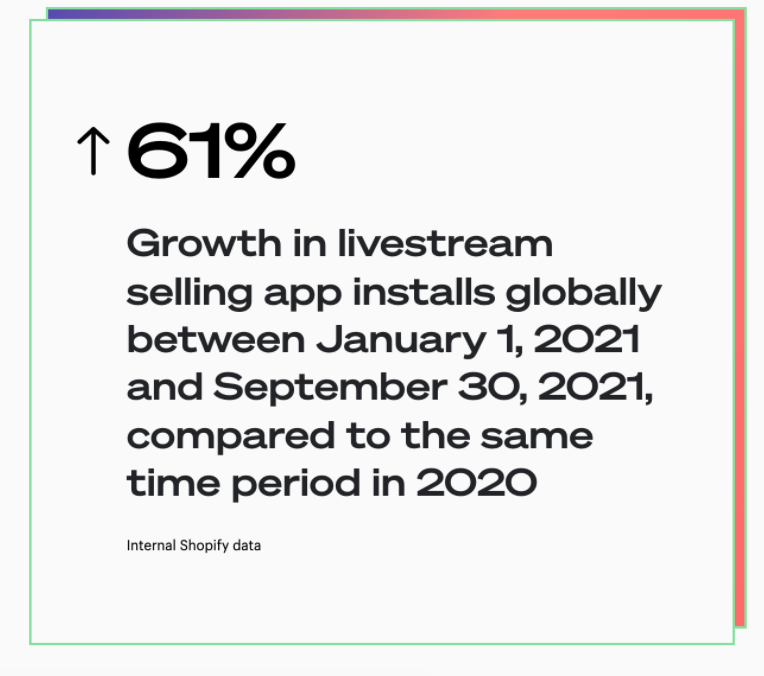
Brands like Sephora have already started taking advantage of shoppable live stream events on Amazon and Facebook. Facebook has also launched Live Shopping Fridays, where users can attend shoppable live streams from beauty and fashion brands, explore new products, and place orders without leaving the platform.

To get started with live streaming, explore these resources:
6. Conversational commerce
Picture this: You visit a brick-and-mortar store to buy lipstick, where a salesperson assists you throughout the buying process — right from showing you different colors to helping you make the transaction.
Conversational commerce is the same. However, instead of a salesperson, you interact with the brand via a chat app, chatbot, voice assistant, or messaging platform. In short, conversational commerce is buying and selling products through messaging and chat apps like live chat, Facebook Messenger, WhatsApp, Talk, and WeChat.
These messaging apps answer your questions about the product, gather insight into your requirements through a series of questions, and recommend products based on your replies, offering a personalized experience.
Further, these assistants or chatbots are available 24/7. This eliminates the need for human reps to be “always-on” to service customers and instead spend their time on more crucial tasks.
Research shows that 41% of consumers prefer to use live chat as a support channel. And, 40% of customers don’t care if the chat is human or bot, as long as their query is answered.
Check out how Gymshark uses a Messenger bot to help customers check their order status, submit a complaint, and request returns.

The good thing is that Shopify has already taken into account this trend and the need for online shoppers to communicate with brands they intend on making purchases from. The ecommerce platform comes with a free app to help store owners engage site visitors, manage conversations and automate responses to convert them into buyers.
Here are a few more resources to help you get started with conversational commerce this year:
- Learn more about Shopify Inbox here
- Explore live chat apps for Shopify stores
- Set up chatbots with these apps
- How Conversational Commerce Is Forever Changing the Way We Shop
7. Sustainability
As customers are becoming increasingly aware of climate change and other environmental issues, ecommerce brands must offer more than a good shopping experience. Research shows that 45% of customers look for eco-friendly or sustainable brands. Further, 71% of US adults between 18 and 55 years care a lot about product sustainability.
Achieving ecommerce sustainability is about building a brand that adopts environmentally-friendly practices at every stage of their product life cycle — from green packing to eco-friendly shipping. In fact, 72% of global consumers want brands to use sustainable packaging.
Apple has cut down its carbon emission by 40% over the span of 5 years.. Further, it stated that 175 of its suppliers will switch to using renewable energy, reducing the annual carbon production by 18 million metric tons.
Adopting sustainability doesn’t require you to change everything about your ecommerce business. You just need to start doing your activities in a way that supports global ecological balance and helps you expand your market share.
Here are some ways to embrace sustainability at your ecommerce store:
- Avoid plastic packaging. Instead, choose recycled or paper packaging when selecting packaging materials
- Ship your products in bulk whenever possible.
- Offer products in your store that help your customers reduce their carbon footprints, such as LED bulbs or compost bins.
- Adopt paperless invoicing to cut down on waste.
Here are a few more resources to help you understand this ecommerce trend and get started with it:
8. Buy Now Pay Later (BNPL)
The Buy Now, Pay Later model isn’t something new. But, during the pandemic, as brands are striving to encourage spending and customers are looking for ways to offset payments, it has become popular — especially among young audiences.
India's buy-now-pay-later (BNPL) industry is booming and is all set to surge over ten-fold within four years. Research estimates that the market will rocket to $45-50 billion by 2026, also indicating an increase in the number of BNPL users to 80-100 million customers by then.
Buy Now, Pay Later is a solution that allows customers to pay for the products in regular installments instead of paying the entire amount upfront. This option is often preferred over credit card payments since BNPL transactions are interest-free. Popular platforms facilitating BNPL transactions include Klarna, PayPal, Afterpay, and Mastercard; you can learn how to set up BNPL on your Shopify store in India here.
Ecommerce retailers around the world are adopting this solution as it reduces the cart abandonment rate, increases the average order size, boosts sales, and makes the checkout process faster. Further, it creates a super shopping experience for the customer by providing them with a flexible way to pay while checking out.
Check out how Vajor is leveraging the BNPL model to nudge buyers to make the purchase:
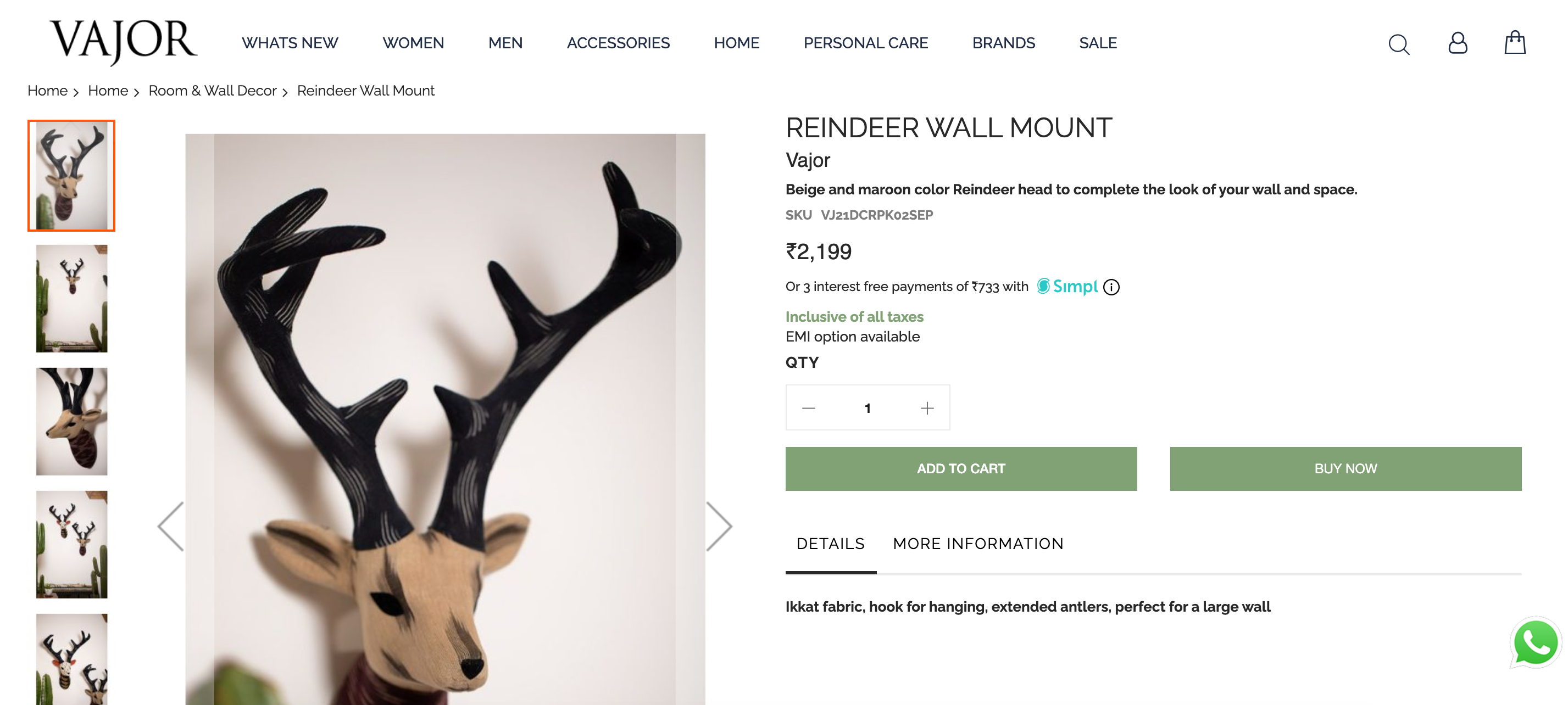
To set up buy now, pay later on your store, explore these resources:
9. Use of crypto
Nowadays, ecommerce brands are looking for diversified payment options to build trust, reduce cart abandonment rates, and encourage customers to spend more. Further, certain credit or debit cards aren’t available in all countries, which makes it more challenging for them to reap the benefits of a worldwide customer base. This is where cryptocurrency on your Shopify store can help.
A cryptocurrency is a digital currency that can be directly exchanged for products and services. It is not controlled by any centralized authority, like banks, and is available globally, making it a preferred payment option. Transactions made via crypto are recorded permanently and are verified by a completely decentralized system, providing greater confidence to buyers.
PayPal has launched Checkout with Crypto feature that allows its US customers to use crypto coins (Bitcoin, Ethereum, and Litecoin) to pay online retailers. Further, eBay has stated the possibility of accepting crypto payments in the future to expand global ecommerce and make the payment process more seamless and affordable for customers.
Despite its benefits, cryptocurrency has tons of risks — some are higher than most of the trends mentioned in the list. Many customers aren’t aware of the ins and outs of cryptocurrency and blockchain and consider it gambling. And since any fiat currency does not back it, there’s no idea where prices will go. And not to mention the massive amount of energy it takes to mine these coins.
Even though many retailers haven’t adopted cryptocurrency, it’s important to keep up with this ecommerce trend, so you can be prepared when it becomes the new status quo.
To get started with using crypto for your DTC business (even though the trend is in its very early stages in India), explore these resources:
- How cryptocurrency could impact your business
- How to set up cryptocurrency as an alternate payment method
10. Video marketing
Video marketing dates back to 1941, but the digital landscape is growing by the day, videos are taking the center stage - with over 8 billion views daily, we’re not surprised! Ecommerce retailers worldwide are leveraging different types of videos — from product explainer videos to video testimonials — in their marketing efforts. In fact, 67% of customers are influenced by video reviews. Hence, it makes perfect sense to hop on this trend.
Videos allow you to highlight the product features and showcase it like never before. When customers get a better look at its functioning and applications, it increases their confidence in the product and builds their trust in your brand. Plus, it allows them to select the right product the first time, resulting in fewer returns.
Furthermore, video testimonials humanize your brand and nudge the audience to convert into paying customers.
Want to get started with video marketing? Here are a few resources to help you:
- How to easily create and use videos to increase your Shopify sales
- Explore all video marketing apps here
11. Loyalty programs
With the rising acquisition costs, brands will be forced to foster long-term relationships with their customers. Here are the key takeaways from our Future of Commerce report on the same:
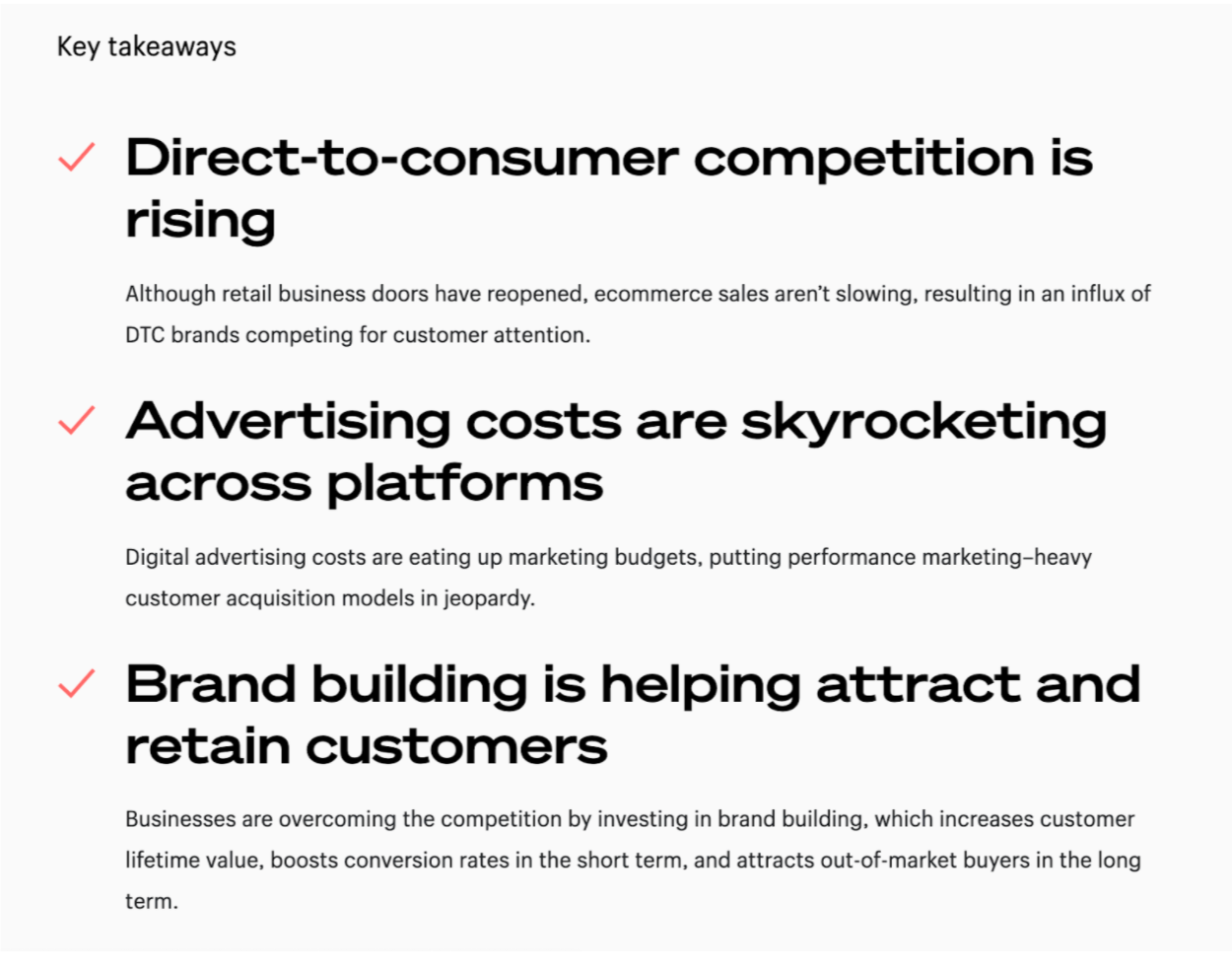
Ecommerce loyalty programs, also known as reward payments, are an effective customer retention strategy that involves rewarding regular customers for repeat purchases. The rewards can be anything such as cashback, discounts, freebies, and next-purchase coupons.
The idea here is to motivate existing customers to create accounts, increase average order size, shop more often, or build meaningful relationships with your brand. Further, these programs help promote word-of-mouth sales and provide brands with valuable data about consumer behavior.
Research shows that 75% of customers favor a brand with a loyalty program. Further, customers engaged in a brand’s loyalty program spend 12-18% more each year, and their average order quantity can go up by 319%.
Take Chumbak’s loyalty program for example:
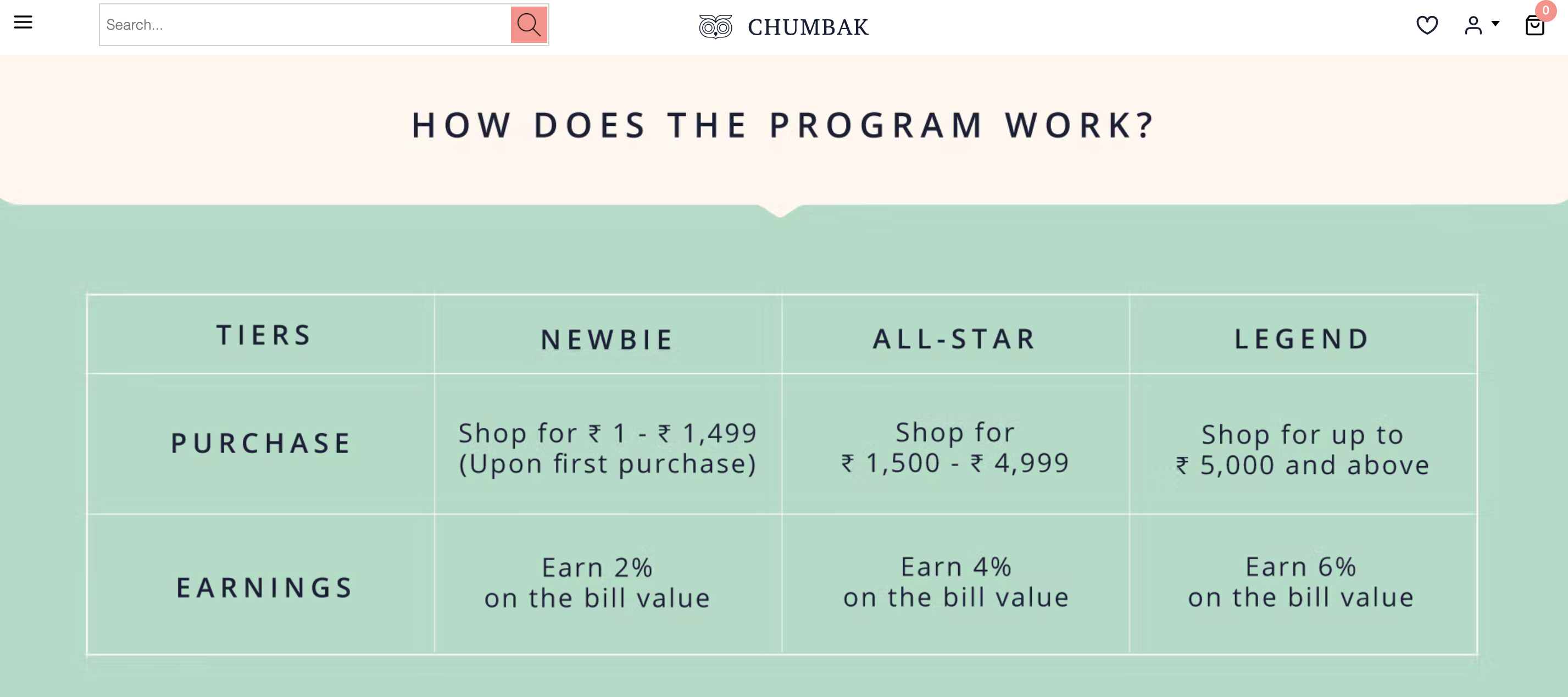
Want to set up a loyalty program on your store? Here are a few resources to help you with the same:
12. Diversified advertising and sales channels
Another ecommerce trend that will enable businesses to lower their customer acquisition costs is diversifying where and how they reach their target audience.
Apart from leveraging the latest social platforms to get in front of buyers, DTC businesses will need to also explore various sales channels and marketplaces. This will not just help them expand their reach, but also lower their customer acquisition costs.
With a platform like Shopify, DTC brands will be able to catch up with this trend faster, owing to the seamless integrations available.
To learn more and implement this trend, here are a few resources:
13. Need for personalization with the death of third-party cookies
Internet users are exercising their privacy rights now more than ever. Our surveys found that at least 28% of technology decision makers around the world are expecting changes to customer data and privacy regulations that may hinder business growth due to the lack of data for personalization of consumer experiences.
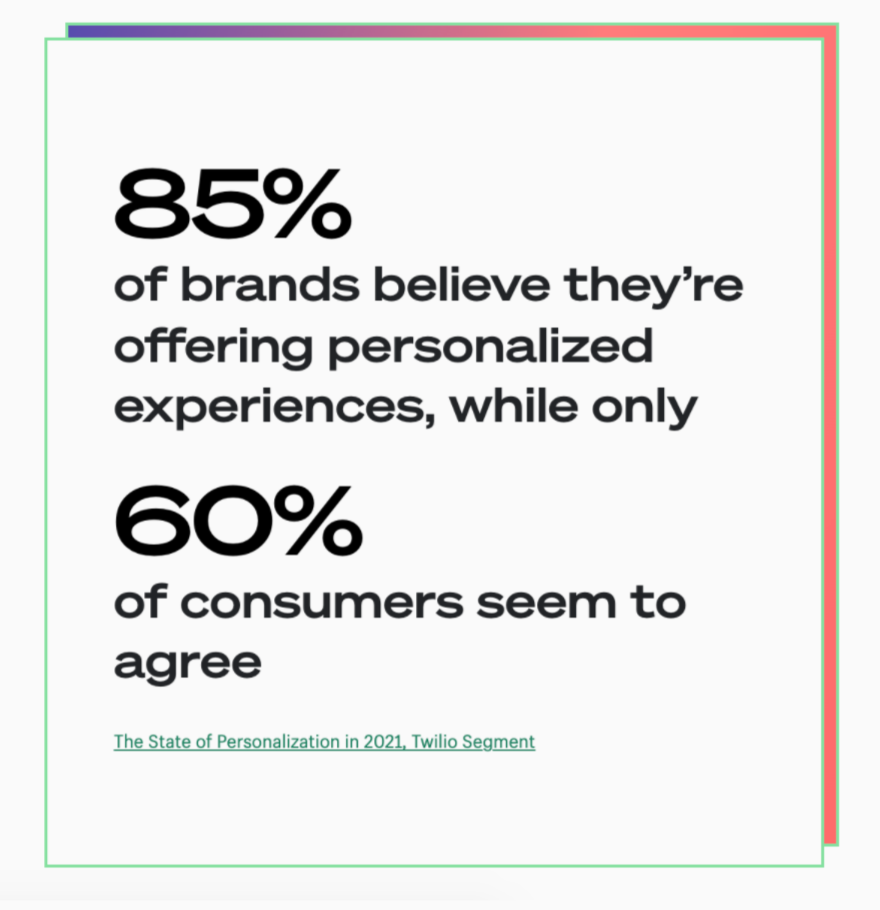
Brands are now seen turning to first-party data to fill the void third-party cookies will be leaving. They will be seen focusing on data that they collect directly from their customers, with their consent. Our surveys showed that 42% of brands are looking into offering product recommendations by using interactive content formats like quizzes and contests, and using more engaging platforms like custom mobile apps.
To encourage more interaction, brands are now also seen being more transparent with customers about how they intend on using their information.
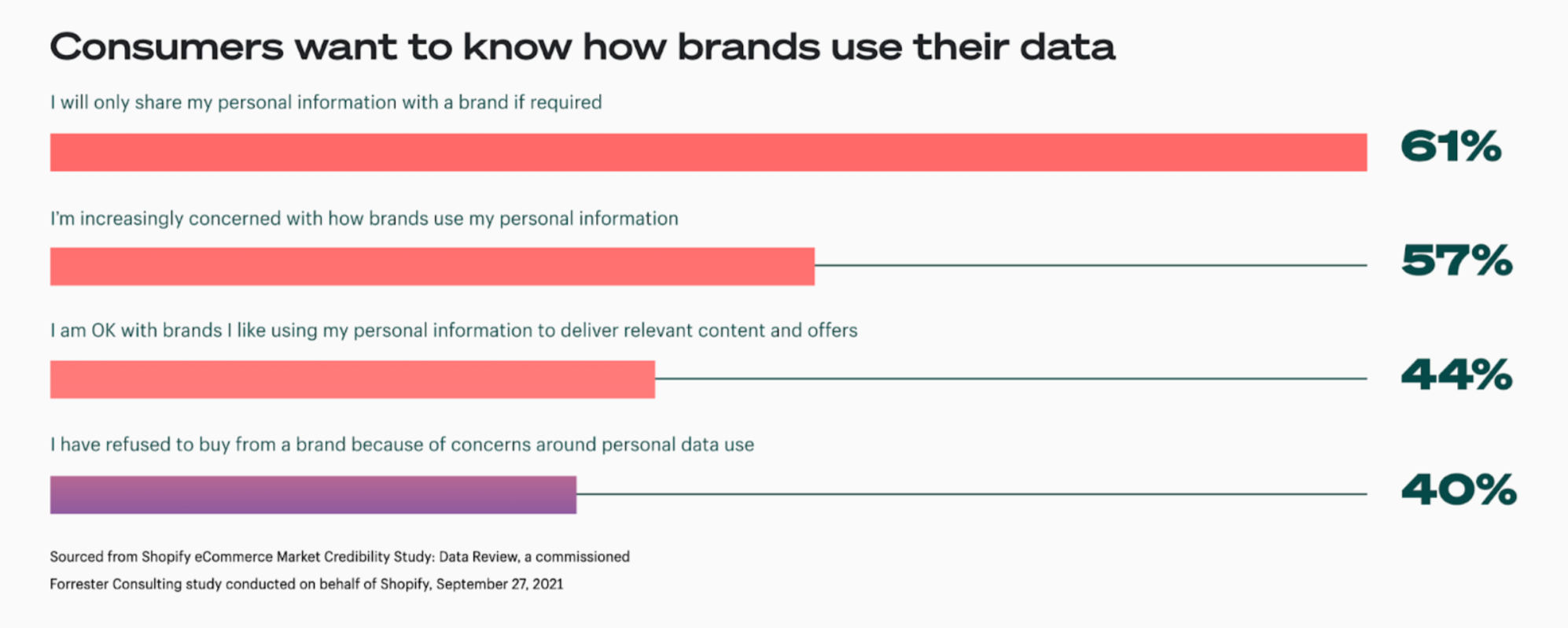
To get started with better personalization for your customers, here are a few resources:
- Website Personalization: Improving Conversion with Personalized Shopping Experiences
- Explore Shopify apps for personalized recommendations
14. Community building
Continuing on the lines of keeping focus on customer retention, another ecommerce trend we see increasing is community building. We’re seeing DTC brands trying to establish exclusive communities and groups for their target audience as well as customers to encourage more proactive interactions.
Here’s an example from an ayurvedic health and wellness brand that is building a community to promote an ayurvedic lifestyle.
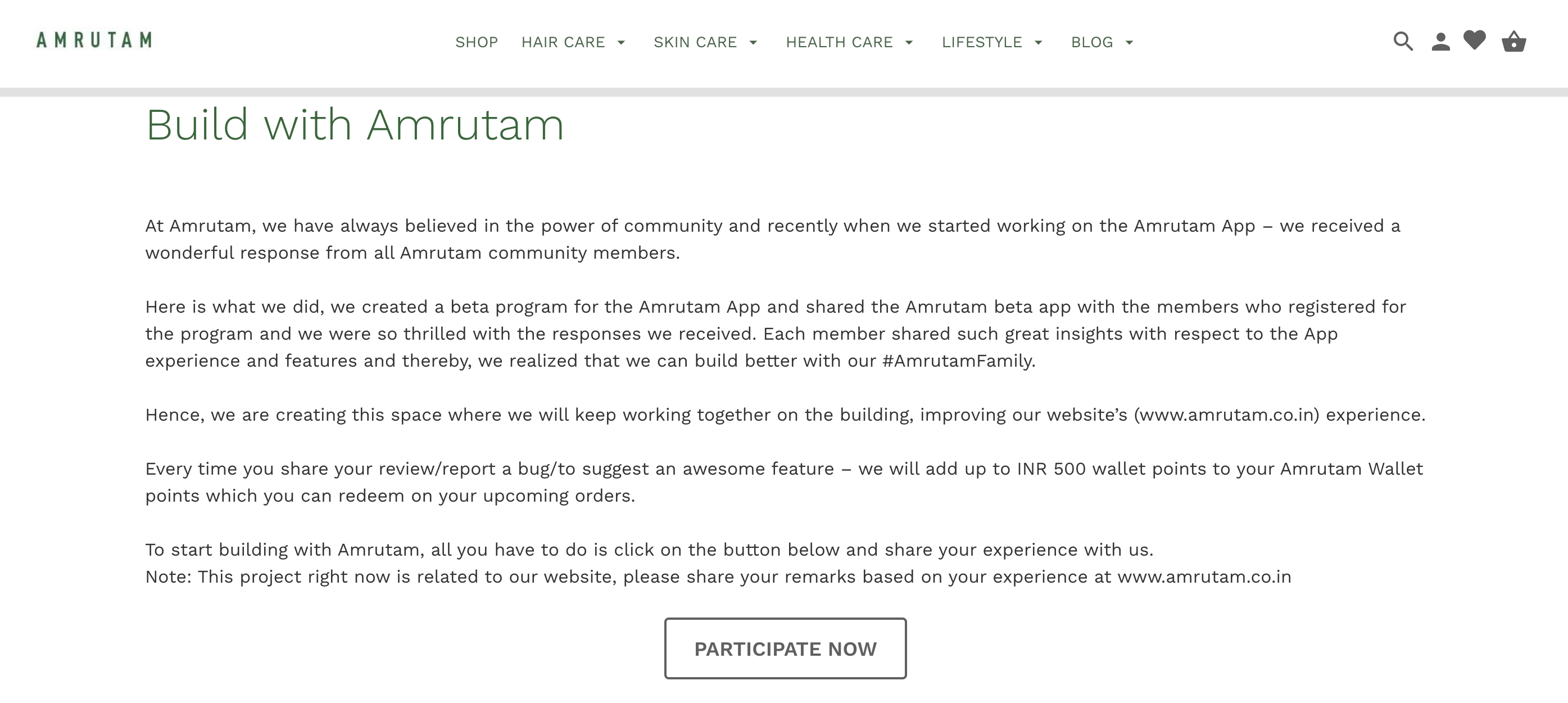
Similarly, brands like Nykaa, a beauty and cosmetics brand has opened an online forum to build a community that proactively engages on topics and concerns.
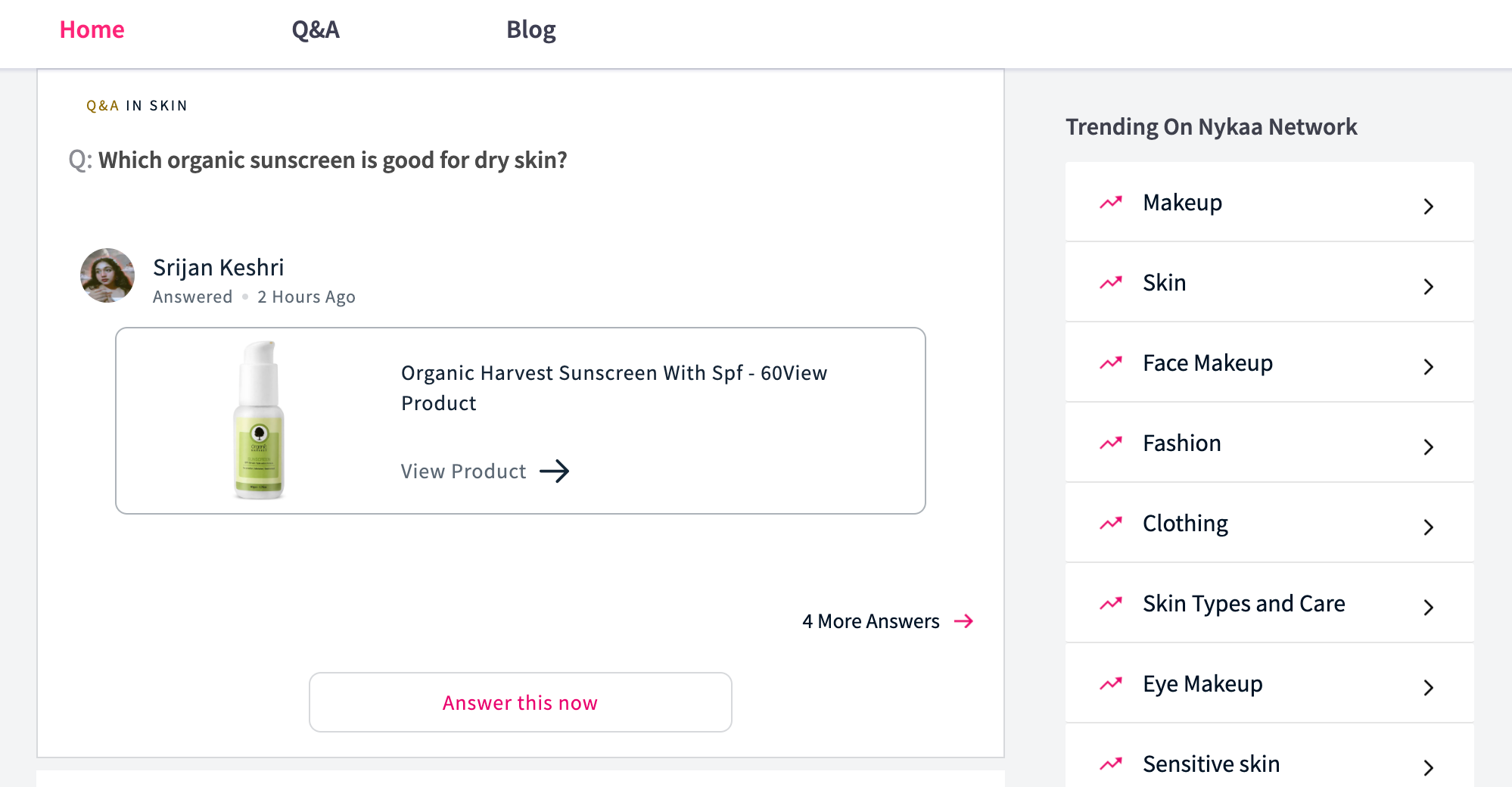
To get started with building your community and boosting customer retention, explore these resources:
- Creating Community: How Retailers Can Build an Engaged Customer Base
- Explore all Shopify community builder apps
Wrapping up
Ecommerce is an ever-evolving business model that strives hard to meet the rising customer expectations. Keeping an eye on the latest trends and integrating those that work best for your brand is crucial to staying ahead of the competition.
That’s where it becomes important to have an ecommerce platform like Shopify that helps you keep up with the changing trends or even anticipate them so you can put your best foot forward at all times.
Ready to catch up with your consumer expectations? It’s time to get started with these trends on your online store.


